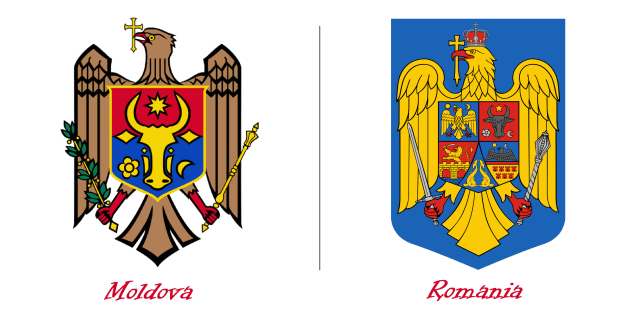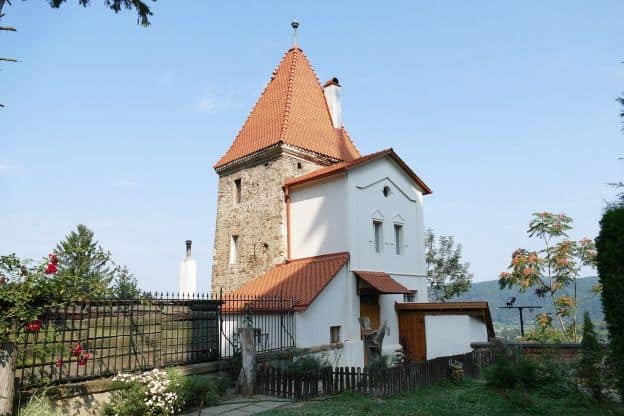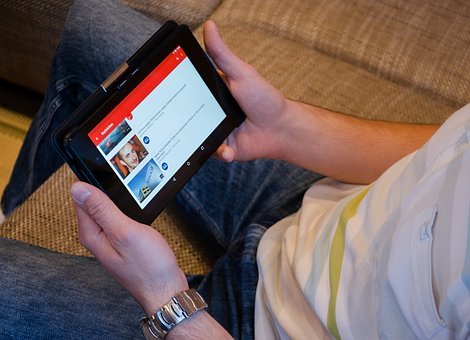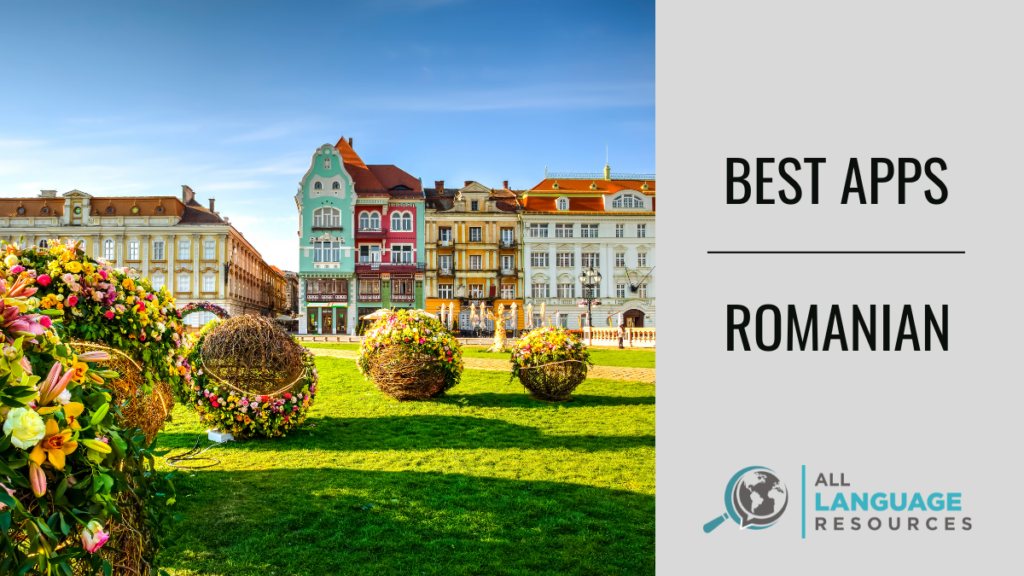Romanian is a Romance language—similar to French, Spanish, Italian, and Portuguese—spoken primarily in Romania and Moldova.
With around 24 million speakers worldwide, Romanian is a fascinating language with a rich history and culture.
Whether your reasons for learning Romanian are personal or professional, you need a solid study plan to get started. And for you to eventually reach fluency, you need to have the best resources at your disposal.
There are lots of resources that could come in handy when learning Romanian. These include courses, apps, podcasts, and YouTube channels, among others.
Romanian Resources · Learn Romanian Grammar · Learn Romanian online with these tried and tested best apps, courses, tutors, games, podcasts, books, and more. In this article, we highlight different types of resources and how they can help you reach fluency. Keep reading!
Table of Contents
Resources for Learning Romanian Online
Once you’ve declared your goals for learning Romanian and figured out a realistic timetable for your studies, you’ll want to find reliable resources for learning the language.
Here are several good choices. Many of them are for beginners, but we’ll also look at resources for intermediate and advanced Romanian learners.
Best Apps to Learn Romanian + Courses and Lessons
Rosetta Stone, Glossika, and Busuu are not offering Romanian at the present time. Nonetheless, there are several good choices for learners at the beginner and intermediate levels.
Most of these courses are also available as mobile apps.
Mango Languages
Most of the vocabulary in these four units of lessons will be particularly helpful for travelers. Mango Languages presents learning objectives at the start of each lesson, so you can preview what you’ll be learning in both grammar and conversation.
The lessons start out with a dialogue, which is then broken down into its components. You’ll be prompted by a friendly narrator to recall various words or try to put them together in new combinations — an approach that might appeal to logical-mathematical learners.

Within the lessons, words are color-coded to show meaning equivalence. You can toggle back and forth between the literal (word-for-word) and non-literal translation. (The slider for the translation mode is at the bottom left of the screen. It’s next to the Speaker button that replays the audio/displays the phonetic version, and the Microphone button that lets you try out your accent and do a voice comparison with the native speaker.)
Mango Languages is quite good at pointing out whether a certain phrase is formal or informal, and whether it’s used to address one or more people.
RomanianPod101
Learners using RomanianPod101 from Innovative Languages can choose from five different experience levels:
- Absolute Beginner
- Beginner
- Intermediate
- Upper-Intermediate
- Advanced
These levels correspond roughly to A1/A2, B1/B2, and C1/C2 in the Common European Framework of Reference for Languages (CEFR).
There tends to be more material in RomanianPod101 for beginning and lower-intermediate learners. For example, the Absolute Beginner level has nearly twice the number of lessons available as the Advanced learner level.
Within each level, you can select several different learning pathways. For Absolute Beginners, these include:
● Basics of the language
● Survival Romanian for travel
● Romanian culture and society
● Conversational Romanian
● Romanian reading practice
● Romanian pronunciation
As the name of the program indicates, most of the lessons are presented as audio files, in the style of a podcast. The lessons contain a lot of cultural information, to help you understand how Romanian speakers interact with each other in various contexts. In addition, you’ll find grammar notes to help you navigate verb conjugations and other essentials.
Each RomanianPod101 lesson is paired with a vocabulary list. Listen to each word or phrase at regular or half-speed; try recording yourself pronouncing the words.
You can select words from the vocab list and add them to a word bank, or a flashcard deck. There’s also a slideshow with further examples from the lesson, which you can loop and play at different speeds. Take a quiz to test your understanding of the lesson, or use the downloadable Lesson Notes to review.

If you’re short on time, you can try the “Learn Romanian in Three Minutes” pathway. Each video concentrates on one essential phrase or function — such as introducing yourself, greeting others, saying thank you, and simple shopping. In these fully captioned videos, native Romanian speaker Raluca introduces a few simple phrases, and then slowly repeats them so you can hear them properly. At the end of the videos, Raluca reveals interesting notes about Romanian culture.
LearnRo.com (Romanian Lesson)
This site, which is accessible to speakers of English, French, Spanish, Portuguese, Dutch, and German, provides a fairly well-rounded introduction to Romanian. Since LearnRo.com teaches Romanian exclusively, you’ll get a better feel for the language than you might with other programs that teach multiple languages.
At present, the site provides lessons at level “A0” (absolute beginner/essential Romanian) and level “A1” (elementary Romanian). There’s also a separate Romanian pronunciation course that delves deeper into the proper way to say vowels and consonants, as well as the use of syllable stress. Grammar lessons have their own section on the site, as well.
While there’s currently no way to practice speaking with the LearnRo.com lessons, you’ll find clear audio clips included throughout the lessons on the site — a boon for auditory learners. The audio is spoken slowly, with good enunciation, so you can really grasp how words and phrases are supposed to sound. Even the grammar lessons have plentiful audio clips.
Pimsleur
Well-known language-learning program Pimsleur gets you to speak Romanian early and often. The audio-only lessons start with a dialogue, which is then broken down word-by-word, syllable-by-syllable. Often, you’ll start at the final syllable of a word, reconstructing it from the end to the beginning. (This forces you to slow down and really think about how each word is constructed.)
The simple audio player is dominated by the lesson clock. You can pause, advance, or rewind playback. Throughout the half-hour lesson, you’ll be asked to produce various Romanian phrases that you’ve practiced, such as “Do you understand English?”.
The program recommends that you keep reviewing the lesson until you feel you have absorbed at least 80% of it. Each lesson will build upon the next, reviewing what you’ve learned and adding to it. You are encouraged to complete about one lesson per day, to keep learning at a good rate, and to retain what you’ve learned.

In a recent app update, Pimsleur added several new features to its audio-based core. These include word-matching exercises, flashcards, and a bit of reading practice. While Pimsleur is still a much stronger choice for auditory learners than visual learners, it’s useful for anyone whose primary goal is learning fluent Romanian conversation.
Public library patrons in North America may be able to access Pimsleur Romanian Level 1 through the Hoopla Digital streaming service.
OptiLingō
Phrase-focused language-learning program OptiLingō teaches Romanian through simple sentences.
Like Pimsleur, the emphasis is on the spoken language, and the goal is to get learners speaking immediately. Unlike Pimsleur, you will see the spoken text in Romanian in a flashcard-like interface, with the English translation written above.
The native speaker will repeat each phrase twice. After each lesson’s fifteen phrases are revealed, the lesson repeats. A stopwatch-like icon is used to change the speed of the playback. You can also pause playback, or flip forward or backward through the flashcards in each lesson.
These no-frills, speech-centric lessons might appeal to an auditory learner. However, they completely lack any discussion of grammar, which may discourage logical-mathematical and verbal-linguistic learners. Further, there are no exercises or interactive materials.
OptiLingō might be helpful for learners traveling to Romanian or Moldova, as well as learners who only want to learn conversation. For learners who want to understand grammar and learn to read and write fluently, other resources will be required.
uTalk
Like Mango Languages, uTalk focuses primarily on Romanian at the beginner’s level. It’s particularly good for learners who want to learn just enough Romanian to get around Chișinău, Bucharest, or Timișoara as a tourist.
For a small monthly fee, uTalk uses a flashcard-style interface to help you learn a set series of phrases. Vocabulary is organized into dozens of different topics. You can learn to ask for directions, go shopping, get a hotel, or order a meal.
uTalk will help you with understanding spoken Romanian — and, to some degree, with Romanian pronunciation. However, it will not teach you Romanian grammar or help you advance to native-level fluency.
Duolingo
In the two main countries where Romanian is spoken, Romania and Moldova, eagles dominate the countries’ coats of arms. Yet in the Duolingo program, it is a watchful green owl who will lead you through gamified lessons to a greater understanding of the Romanian language.

Each lesson in Duo’s “learning tree” has a Tips section. Here, you’ll find information about grammar, sentence structure, and basics like the Romanian alphabet and pronunciation. Topics in the learning tree cover both vocabulary and grammar and are grouped into levels after you complete the “Basics” section.
If you prefer not to get bogged down in rules and to use a more naturalistic approach, you can try learning by skipping the tips and just working your way through the exercises. You can use word banks in the exercises, or type out the words yourself (which will reinforce the correct Romanian spellings).
If you’re unsure about the answer to any question in an exercise, it’s worth clicking on the “Discuss” option. With several million learners on the Duolingo platform, you’ll find lively conversations exploring every aspect of grammar, vocabulary, and syntax. Fluent and native Romanian speakers often join in to impart their wisdom. You can also browse all the Romanian discussions on Duolingo for topics of interest.
Duolingo can be helpful for learning vocabulary and sentence structure, and its systematic approach shows you a clear learning path.
That said, Duolingo has no speaking component, so it will not help you assess your Romanian pronunciation. In addition, the audio you’ll hear throughout the course is a rather stilted, computer-generated voice, rather than a native speaker. Honestly, I found the text-to-speech tool used rather garbled at times, especially for the exercises where you have to type what you hear.
At present, Duolingo’s Romanian course doesn’t have the reading practice (“Stories”) or podcasts that are available for other languages in the program.
Memrise
Course-hosting platform Memrise has a variety of Romanian courses for learners at different levels. Spaced repetition, coupled with gamified learning, helps you retain Romanian vocabulary and verb conjugations.
With the Duolingo Romanian Vocabulary course on Memrise, you can get additional practice with the Romanian vocabulary presented on Duolingo. In this course, you’ll hear hundreds of Romanian words, recorded by a native speaker. Unlike several other Memrise Romanian courses, the audio is included consistently. This course may be preferred by auditory learners and those who wish to focus on listening and speaking skills.

Learn Romanian for Real! livens up learning with catchy category titles such as, “I’ve Got the Power!” (use of “to have” and “to be able to” in Romanian), “Coffee o’clock” (telling time), “To Be or not To Be” (conjugating the verb for “to be” in Romanian), and “Is there a Doctor in the Room?” (parts of the body/getting medical care).
Despite the playful lesson titles, there is a lot of practical Romanian vocabulary included in Learn Romanian for Real! — plus solid grammar lessons about adjectives and verb conjugation. Even though the native audio does not carry through all of the lessons, this course provides a thorough foundation for learning Romanian vocabulary and grammar. It has value for both beginners and intermediate learners.
The Limba română course teaches words and concepts in small units, organized into categories such as “personal pronouns,” “days of the week,” and “ordinal numbers.” The course features a brief introduction to the language and has helpful features, such as presenting both the singular and plural forms of nouns. Unfortunately, this course lacks audio. If you only want to learn how to read Romanian, this course will probably be helpful. However, you would need to use supplementary resources to learn pronunciation.
There are also courses that focus on specific topics, such as Romanian verbs, numbers, and colors.
Past the beginner’s level, this Intermediate and Advanced Romanian Vocabulary course covers many topics — such as household words, politics, and nationalities — in great detail.
Romanian Tutor Marketplaces and Language Exchanges
If you’re trying to find a Romanian conversation partner, whether for texts or voice calls, there are several apps that can help you in your quest. Tandem can match you with either a conversation partner or a tutor. Speaky has a similar service, although some of the users may send inappropriate messages.
HelloTalk can also connect you with Romanian speakers from around the world. It has a “Moments” feature that lets you send messages to all the Romanian speakers on its network. This might be beneficial if you had a specific question about the language. You can also use this feature to ask for corrections to something you’ve written in Romanian.

Verbling and italki are primarily language tutor marketplaces. If you have a social-interpersonal learning style — in other words, if you learn better when you interact directly with a tutor or other learners — you might benefit from finding a tutor for one-on-one lessons.
italki offers both “community tutors” and professionally trained teachers. As a result, italki has a larger network of Romanian tutors than Verbling. (Verbling’s tutors are all teachers by trade.) The community tutors on italki are not necessarily trained educators but are generally native or fluent Romanian speakers. Community tutors tend to charge a lower hourly rate than professional teachers, but there are some exceptions.
Other Romanian Learning Resources
Reference materials such as dictionaries, tools for typing in Romanian, and interactive resources such as games can supplement more structured courses and learning apps.
Lists of Romanian Resources
As you begin or continue your Romanian learning adventure, you’ll probably stumble across various lists of Romanian resources.
Some of these are extremely helpful. However, not all of them have been updated recently, so some of the resources they reference are obsolete.
The Duolingo Romanian discussion board keeps an extensive list of Romanian learning resources. As of this writing, the list was last updated in March 2017. Several of the links are no longer functioning, unfortunately — including the Curs de Limba Romana (Romanian Course) from the Romanian government, and the links to streaming Moldavan and Romanian television.

The Branda.ro blog has a list of resources for Romanian language immersion. A few of the links — such as those for the larger song playlists on YouTube — are no longer working. Nonetheless, it’s an interesting and varied list that will be especially helpful for intermediate and advanced learners. It includes links to music videos, links to performances by stand-up comedians, and links to podcasts and YouTube channels with Romanian content.
Online Romanian Dictionaries
Online Romanian dictionaries provide definitions, translations, pronunciation guides, and spelling help.
The Duolingo Romanian dictionary presents a simple search interface, where you can enter words either in Romanian or English. When you get your results, you’ll hear the translated word pronounced. In some cases, for simpler words like “book” or “apple,” there will be a basic illustration of the word. Many entries include example sentences with audio clips.
The Reverso Dictionary can easily be used by beginning learners to translate words to and from Romanian or English. Simply click on the red and blue arrows between the language names to reverse the direction of the translation. Reverso’s dictionary includes audio clips for pronunciation, as well as many examples of the Romanian word used in context.
The hallo.ro dictionary has extensive word lists for each entry, defining words in several different contexts, and including related words. For instance, if you look up the word “book,” you’ll get a list of results that includes the words carte (book), cărţulie (booklet), blocnotes and carnet (notebook), and broşură (brochure). You’ll need to click on each of the Romanian words to get the exact English translation, though. Although not all of this dictionary’s features work smoothly, one advantage is that you can switch modes to get instructions or translations in English, Romanian, French, Italian, and German.

The Dexonline Romanian dictionary is probably better for intermediate or advanced learners. By clicking on the globe icon on the top menu, you can change the site language from the Romanian default to English, Spanish, or Hungarian. That said, you can only look up Romanian words — which will then be defined in Romanian. A few features set this dictionary apart: There are declension tables accessible via a tab within the entries for nouns, and conjugation tables for the verbs. Some words, such as carte (book), have a “synthesis” tab that will show you idiomatic expressions using the word in question. For instance, the expression a nu ști boabă de carte literally means “not knowing the grain of a book” — in other words, illiterate.
Romanian Grammar Reference
The “smart” conjugating tool on the Cooljugator site includes automatic translation to English using meta-text when you hover the mouse cursor — so you can see the original Romanian and its English meaning at the same time. There are also numerous in-context examples to show you how these verbs might be used in a typical sentence. It’s especially user-friendly for beginning Romanian learners.
The “conjugator” feature on the Verbix site might be better for intermediate Romanian students. The conjugation tables are presented in plain text, in a format that looks a lot like a traditional grammar textbook. The plain-text layout could be useful for copying conjugations into a text document for later study. While some of the verb tables include the meaning of the verb’s infinitive and even provide some etymology, other verb tables don’t even provide the meaning of the verb in English. Also, the names of most of the tenses and moods are in Romanian, rather than English.
Conjugare.ro can help intermediate and advanced learners with Romanian verb conjugation. This site is completely in Romanian, though, so beginning learners may not find it as useful. (The built-in “translate” feature in the Chrome browser will translate the whole page — including the Romanian verbs you’re trying to conjugate — into English, which defeats the purpose of using the site.)

Typing in Romanian
There are several online Romanian keyboards/text editors you can use for typing in Romanian:
● Romanian Typing Keyboard (TypingKeyboards.com)
● Type Romanian Characters (TypeIt.org)
● Romanian Keyboard (Lexilogos.com)
● Online Romanian Keyboard (TypingBaba.com)
The Romanian Keyboard: Romanian Typing App will help you type special characters in Romanian on your Android device.
Blogs for Romanian Learners
These are almost always in English, for beginning and intermediate learners.
The Clozemaster Blog only has a handful of articles about learning Romanian, but covers a few essential topics well: numbers, pronouns, adjectives, adverbs, and nouns all get time in the spotlight.
The blog on the language learning site OptiLingō has a section dedicated to Romanian. Currently, there are a handful of articles — mostly tips for how to learn the language, rather than exploring its grammar or vocabulary.
The Romanian language learning site LearnRo.com has a few blog articles that would be helpful if you’re traveling to Romania:
● A Practical Guide to Traveling in Romania
● How to Find a Job in Romania
● How to Rent a Property in Bucharest as a Foreigner
These articles include a lot of good resources for travelers a foreign workers. Unfortunately, the way the site is currently organized, there’s no way to navigate directly to all blog articles. The site seems to be actively maintained; you can use the sitemap to see if new blog articles have been recently added. (They would be listed near the bottom of the page, above the “Main menu” header.)
Romanian Language Exercises, Games, and Flashcards
For beginning Romanian learners, Digital Dialects offers a fun way to learn fundamentals such as basic phrases, fruits and vegetables, and color words through online games. Before you try each game, you have the opportunity to learn the vocabulary it covers. The lessons include illustrations and good-quality, clear audio from real human speakers. (There’s also a version designed for use on mobile devices, such as tablets.)

Clozemaster, the fill-in-the-blank language exercise site with a retro feel, has multiple-choice Romanian sentence completion exercises for intermediate learners. Although an English-language translation is displayed for each sentence, the complexity of most sentences makes Clozemaster a better choice for intermediate and advanced learners than beginners.
For flashcard fans, Anki is a highly customizable way to make multi-media flashcards. Build your own sets or take advantage of the shared Romanian flashcard decks from other Anki users.
Quizlet also offers user-created Romanian flashcard sets, which you can study with drills, quizzes, writing and spelling exercises, and even word-matching games.
Romanian Reading Apps
Your knowledge of everyday written Romanian will increase greatly as you expose yourself to resources such as books, magazines, and newspapers.
Before we get into where to find Romanian reading material, let’s take a quick look at two reading resources: LingQ and Readlang.
LingQ gives you practice reading in Romanian, with built-in word translations. You can upload your own material or use their aggregated library of mini-stories, poetry, language lessons, and other content. Looking up Romanian words is fairly simple with LingQ, although quickly finding specific words out of the reference list you’ve created can be more problematic.
Readlang gets high marks for its utility and practicality. It’s a browser extension that lets you translate any unknown Romanian word or phrase on a webpage, simply by clicking on it. If you’re signed in to your Readlang account, the app will automatically create flashcards for you, based on the words you look up.
Romanian Books
Card-carrying members of a North American public library might be able to borrow RomanianPod101’s audiobook, Everyday Romanian For Beginners – 400 Actions & Activities, through the Hoopla Digital virtual library. This book covers common phrases and leads you through a series of everyday scenarios, like socializing with friends or commuting to work.
Through Hoopla, you can also borrow J.M. Gardner’s audiobooks, 1000 Essential Words in Romanian and Travel Words and Phrases in Romanian.
Nicoleta Meitert, who runs a YouTube channel for Romanian learners, brings her lively style to the whimsically illustrated textbook, Learn Romanian with Nico. It includes grammar, vocabulary, explanations of the language, comic illustrations, and exercises.
Playing with words can help you remember them better. Romanian Pocket Puzzles has word searches, word scrambles, and multiple-choice quizzes to reinforce basic vocabulary.

When you’re ready to move on to reading in Romanian, try the First Romanian Reader for beginners: bilingual for speakers of English
. Available in both ebook and paperback forms, this book reviews the Romanian alphabet and provides vocabulary lists for each bilingual story. The publisher has provided accompanying audio tracks for this and the other books in this series, which take learners from the CEFR A1 to B1 level. There are reader reports of some typos in the texts, as well as some stilted translations. Nonetheless, these bilingual readers should help bridge the gap from English to Romanian reading.
Fans of classic comics may appreciate the vintage Romanian gems from the Comic Book Plus site, which offers old-timey pulp periodicals in a variety of styles, spanning several different categories. With a few books dating as far back as 1893, and several from the 1940s and 1950s, these are quite a find for Romanian language learners who appreciate classic comic-book art. Read simpler short stories in Dimineata Copiilor (Children’s Morning) or Universul Copiilor (The Children’s Universe). Glimpse is a Romanian picture of Ancient Egypt in Faraonul (The Pharaoh). Intermediate and advanced students can electrify their Romanian reading with a biography of inventor Thomas Edison, published in 1932.
As expected, Amazon.com is a reliable source of both print books and ebooks in Romanian, with selections including children’s books, bilingual books, textbooks, cookbooks, history books, and fiction.
Collections of ebooks for intermediate and advanced Romanian learners seem rather limited. Independent self-publishing site BookRix appears to have the largest selection of free Romanian ebooks online.
If you’re looking for book suggestions, Culture Trip has compiled a list of 11 classic and contemporary Romanian novels.
Romanian Podcasts
Like music and radio, podcasts give you plenty of practice in understanding spoken Romanian.
We’ve rounded up a half-dozen of the best podcasts to help learners at all levels learn Romanian. Advanced learners may also enjoy Romanian immersion with the No Fain Podcast, hosted by Cristi and Mihai. Available on Spotify, YouTube, and Apple Podcasts, No Fain discusses everything in the worlds of gaming, technology, news, society, and culture.
YouTube for Romanian Learners
Romanian Hub covers myriad topics of Romanian language learning: grammar, phonics, pronunciation of proper names, conversation, and auditory comprehension. Minhea, the host, teaches with a striking intensity. In addition to material about the language proper, he imparts his knowledge of Romanian culture, geography, music, poetry, and history.

If you prefer a more laid-back approach, the charming videos on the LearnRomanian WithNico channel may be just your cup of tea. The Romanian in Use playlist brings the language to life with tongue-in-cheek skits and dialogues.
RomanianPod101.com has its own YouTube channel. There are dozens of videos, helpfully divided into playlists by level and skill. For example, there’s a “Romanian Listening Comprehension for Absolute Beginners” playlist, a “Romanian Intermediate Reading Practice” playlist, and an “Advanced Romanian Listening Comprehension” playlist. The RomanianPod101.com channel also presents motivational tips and learning strategies.
Sleep-learning a language may be too good to be true. However, if you’d like to give it a try — or, at least, get eight hours of common Romanian phrases all in one resource — Eko Languages presents a “Learn Romanian While You Sleep” video. You’ll hear each phrase once in English, then echoed three times in Romanian. The Romanian phrase and its English translation also appear onscreen.
Learners at a beginning to intermediate level — who are not looking specifically for grammar but would rather focus on conversation, culture, and contemporary Romanian — may enjoy the quirky RomanianWithGia channel. With one-person, multi-character skits and dozens of dynamic lessons, Gia teaches Romanian through English with bilingual subtitles…and plenty of personality.
TVR (TV Romania News Channel) has a variety of content for advanced learners, including humor, politics, current events, music and even folklore. Browse hundreds of videos on dozens of playlists. You can even work on your Romanian accent and pronunciation with the Vorbeşte corect! (Speak correctly!) playlist.

